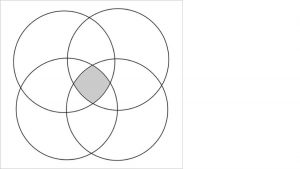43 Workshop 4
WORKSHOP FOUR 9/15/20: THE ORIGINS OF ROME
General Instructions:
For this workshop, you’ll be organized in a Zoom Breakout Room with a group of approximately four students. Select a person to be the timekeeper. This person should keep the group moving along according to the time allotments on the worksheet. This job is crucial, since without it, the group will not complete the experience which the worksheet is designed to bring about. Please select a volunteer reporter. Everyone should make notes of their own reflections. The reporter’s job is to record the group’s conclusions and report these out.
This workshop has two parts and is designed for 1 hour. Please note the start: _________ and end:__________ times before beginning.
Although we must use the internet in order to meet, please refrain from using a search engine (e.g. Google) to look up answers to questions. If a question arises during discussion that you cannot answer without external research, please bring your question back to the seminar for discussion and/or use it as a writing prompt and do your research outside of class.
Part I: The Arc of History (20 minutes)
In the Preface of his voluminous history of Rome, Livy writes:
Here are the questions to which I would have every reader [5] give his close attention—what life and morals were like; through what men and by what policies, in peace and in war, empire was established and enlarged; then let him note how, with the gradual relaxation of discipline, morals first gave way, as it were, then sank lower and lower, and finally began the downward plunge1 which has brought us to the present time, when we can endure neither our vices nor their cure.
Perhaps using Ziteboard in order to work collaboratively, https://ziteboard.com/ or selecting a volunteer illustrator to show your idea, please create an illustration of the shape of Roman history, according to Livy.
Noting that the excerpt you read for today contains the preface through Chapter 13 of Book I out of the 45 books that comprise Livy’s work, where, on the arc, would you place the events depicted in these chapters? Given where you placed the events detailed in Book I, how, then are these events valued by Livy (e.g.: are they seen in a positive or negative light, were they beneficial or harmful to Rome)?
Part II: The role of Women in Roman history (40 minutes)
- Please go through both the Livy and Vergil and make a list of all the important female characters. As you go, describe each character: who are they? What do they do? What role do they play in the history of Rome?
- Next, focus on these four: Dido, Lavinia, Rhea Silva (Ilia), and the Sabine Women. Compare and contrast their stories. If you were to draw a Venn Diagram with four circles, where would you place each? What commonalities would you note in the overlaps? What thematic continuity would you describe as the center of the diagram?

- These stories tell us a lot about how Ancient Rome was understood symbolically and thematically in its own time as well as today. How does your description of the center of this Venn diagram inform your understanding of the story of the rise of Ancient Rome?
- Please be prepared to report out your conclusions and raise related questions for discussion with the reconvened class.
